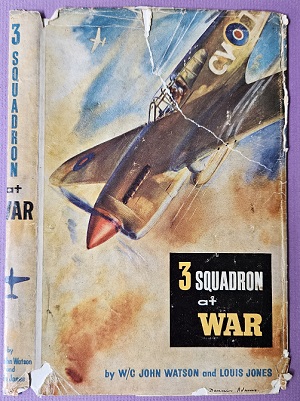Description
Title: A Piece of Cake in the Middle East
Author: Howard, Keith and Birtles, Sam
Condition: Very Good
Edition: 1st Edition
Publication Date: 1994
ISBN: 0646203584
Cover: Soft Cover without Dust Jacket – 38 pages
Comments: The authors served with 454 Squadron RAAF in the Middle East.
454 Squadron is one of the lesser known RAAF European units. Equipped with Martin Baltimore light bombers, this Article XV squadron returned to Egypt in 1943 for service across the Mediterranean and finally up the eastern coast of Italy. Keith Howard was a pilot and Sam Birtles was a navigator-bombaimer in the middle east and Italy. When they joined the squadron it was operating out of Benghazi carrying out anti-submarine patrols, convoy escort and daylight reconnaissance flights around Greece, Crete and the Aegean.
The squadron was later re-equipped as a mobile squadron and moved to Italy to join the Desert Air Force to carry out daylight bombing of military targets such as railway marshalling yards, ammunition dumps etc. Howard and Birtle’s operational flying came to an abrupt end on 23 August 1944 when they were shot down by German flak just north of Florence. This brief memoir includes training details as well as service in the Med and Italy, details of when they were shot down and subsequent capture and release.
454 Squadron, Royal Australian Air Force was formed at Williamtown, New South Wales, on 23 May 1941. Formed in accordance with Article XV of the agreement implementing the Empire Air Training Scheme, the squadron was destined for service in Europe with Britain’s Royal Air Force (RAF). It was, however, disbanded on 11 July, and its personnel dispersed between 456, 457 and 458 Squadrons. 454 Squadron was given a second lease of life on 30 September 1942 when it was reformed as a light bomber squadron at Aqir in Palestine. It proceeded almost immediately to Iran where, equipped with Bristol Blenheims, it joined a force intended to counter any German threat from the Caucusus. Based at Qaiyara, the squadron flew no operational missions and instead served to provide refresher training on the Blenheim for crews being posted to other RAF squadrons.
In January 1943 454 Squadron returned to Palestine, where it stopped briefly before moving on to Amiriya in Egypt in February, where it joined 201 Group of the RAF’s Middle East Command. Having left its Blenheims in Iran, the squadron was equipped with Martin Baltimores. It commenced operations as a maritime patrol squadron and spent the next 17 months working in this capacity over the Mediterranean – its main targets were enemy submarines and merchant shipping. It was also used for long-range reconnaissance and occasionally employed in strikes against land targets in Crete, southern Greece, and the Greek islands. During this period 454 Squadron operated from several airfields including Amiriya (16 February – 12 April 1943, 5 August – 20 October 1943), Gambut III, near Tobruk in Libya (13 April – 4 August 1943), and St Jean (21 October – 3 November 1943) and Berka III (4 November 1943 – 25 July 1944).
The squadron relocated to Pescara in Italy in July 1944 and joined the Desert Air Force. Its role now changed to providing air support for the ground forces engaged in the Italian campaign, generally in the form of concentrated pattern bombing. Operating from a succession of airfields (Pescara, 26 July – 17 August 1944; Falconara, 18 August 1944 – 6 December 1944; Cesenatico, 7 December 1944 – 15 May 1945; and Villaorba, 16 May – 14 August 1945), 454 Squadron earned a reputation for efficiency, despite Italy’s climatic extremes. In addition to its ground support missions, the squadron also attacked targets, experimented with radar-controlled bombing techniques, and, in early 1945, harried the retreating German forces by night. The squadron’s war ended with the surrender of German forces in Italy on 2 May 1945 and it was disbanded at Villaorba on 14 August 1945.





